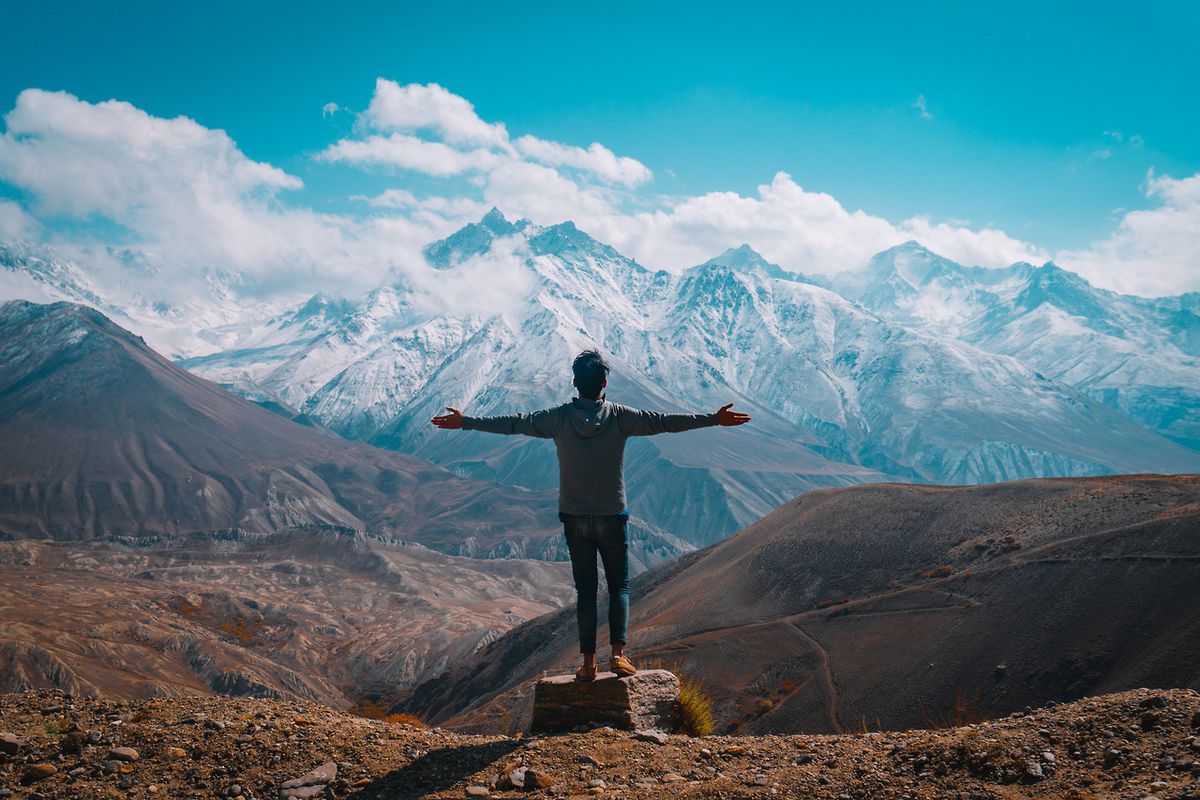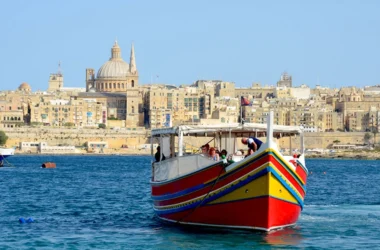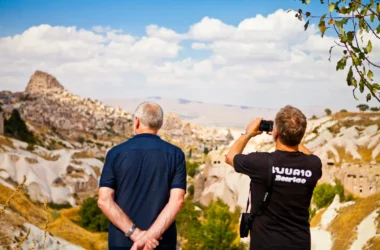The Pamir Highway is the ultimate – and the most unknown of – road trips. We reveal how to see the highest highway in the world properly, from its 4,000m-high mountain passes and hardy mountain villages to its 3,000-year-old Silk Road cities. Clue: you’ll need a skilled guide and carefully crafted itinerary for this remote region.
PAMIR HIGHWAY IN TAJIKISTAN
Sheer limestone on your right; a gravelly drop down into a glacier-blue river valley to your left. There’s barely room for a bike to pass at this point – but that’s all right. You’ll be the only ones on this road for the next 100km or so. The most traffic you’ll see is black-robed herders on horseback, corralling their horned cattle to their summer pasture below. You’ve left a Silk Road Soviet city in your rear-view mirror and have the highest town in Tajikistan in your sights. Welcome to the Pamir Highway.
Chris Ellis, from our adventure vacation specialists ExploreIt’s little wonder that the Pamir Highway has been on Chris Ellis’ mind for the best part of four years. He’s been trying to create a Pamir Highway trip via Tajikistan since he started working for our adventure vacation specialists Explore – and he’s finally succeeded. “We knew it was not going to be a vacation,” says Chris. “It was going to be an adventure in the truest sense of the word. It’s hard going. The pace of travel is fast; you’ve got travel at altitude; you’ve got long days in the car. It’s a hard trip, and we try to be as honest about this as possible, so that people are ready for that. You kind of know that when you put on a trip like this that it’s going to appeal to those really intrepid travelers that are looking for that next adventure.”
The Pamir Highway (or – for the unromantics – the plain old M41) is one of the highest road trips on earth. Over around three weeks and 1,250km, you’ll bump through three countries, from Tajikistan’s capital of Dushanbe to Osh, the oldest city in Kyrgyzstan, on a road with Silk Road origins. Even better: it’s via a gauntlet of lunar mountain passes, furious river rapids, hot springs and geysers.
This isn’t the sort of region you want to admire from afar. You’ll scramble across mountain passes in a four-wheel drive, hike the alpine meadows, stay with the communities that tough it out at 3,650m, and learn about the storied history of the Pamiri people who live here. Because while we might think this is the edge of the world, to tens of thousands it’s still the center. Along the Shuraba Pass (2,267m) – the border region between Tajikistan and Afghanistan – people still tell stories of the shepherds, pilgrims, traders, explorers and soldiers who have traversed these roads for a few millennia.
ESSENTIAL INGREDIENTS: SMALL GROUPS, GUIDES & HOMESTAYS
The Pamir Highway is pioneering territory for tourists. To get the most out of it you will need to travel with a vacation company and a guide who know how to approach the rough terrain, navigate semi-autonomous border regions, and translate the glacier-hewn scenery and complicated history. They’ll have a satellite phone and back-up torches for when you’re several hundred kilometres off-grid, and juggle visas, languages and cultural norms without blinking. The traditions, language, religion and political troubles of the Pamirs are all vastly different from Tajik people elsewhere; your guide will untangle this. They’ll have the knowledge that makes all the disparate parts of the trip click.Your guide will also be your support. The Pamir Highway can be gruelling stuff. You’ll spend much of the two weeks on unmade mountain roads, bumping along at high altitude. But you’ll also soon realise that the lack of tourist infrastructure is a blessing. “Throughout Tajikistan it’s all local guesthouses,” says Chris, “but to be honest they’re more like homestays. They’re run by local families in the area and you’re pretty much sleeping in their house – they’ve just converted it a little bit. It’s not the kind of homestays where they receive tour groups every weekend of the year. It’s not that sort of manufactured experience. People love the opportunity to be able to do that.”
The chance to get to know another culture is a two-way street. After all, taking on the full Pamir Highway is still the privilege of the few who are prepared to take on the challenges – and costs – of traveling this isolated branch of the Silk Road. The communities you meet will be as interested in meeting you as you are in meeting them.
Through them, you’ll understand more about the recent border conflicts and malleable territories. In Tajikistan’s Eastern Pamirs, you’ll find ethnic Kyrgyz peoples who still live semi-nomadic lives, moving down to graze cattle in yurt-dotted pastures in the summer and retreating to the mountain villages in the take-no-prisoners winters. Or you might meet the hardy residents who live in Murghab – a town guarded by gleaming 6,000m-plus mountain peaks.
FROM SILK ROAD TO SOVIET
It’s a good job that most tours start off in the Tajik capital of Dushanbe, really – it’s where the story of the Pamir Highway begins. A walking tour of the city will take in the National Archaeological Museum of Tajikistan, mosaicked Navruz Palace and Rudaki Park. Your guide will reveal how the Soviets established Dushanbe as a center for textile production in 20th century – a clue as to why they built the Pamir Highway in the first place.Osh lies at the other end of the Pamir Highway – an ancient trader’s city and the oldest in Kyrgyzstan. Silk was spun here in the 8th century; you can still shop for sheepskin hats and kurta yoghurt balls in the Great Silk Road Bazaar, as nomads and traders did 3,000 years ago.
The wild world outside the cities heaves with history, too. Lenin Peak (7,134m) looms over the Pamir Highway much as the dictator’s legacy loomed over Tajikistan during Soviet rule. The Wakhan Valley is shared between Tajikistan and Afghanistan – a buffer zone that the British and Russian Empires wrestled over during the 19th-century Great Game. Before that, it was a route for traders, nomads and caravans for a good few millennia. “I think you learn more and more about the history as the journey progresses,” says Chris. “You see that in real time.”
THE TIME IS NOW
The seasons dictate the best time to go to the Pamir Highway. Life lived along the highway is hard, thanks to short-lived cool summers and long, hard winters. You can only go in the summer months, when snow and ice (and snow and ice melt) don’t block the road. “Even then,” says Chris, “it’s not exactly a hubbub of tourism.”
But in more general terms, the best time to go is right now. Chris explains: “It’s had its ups and downs in terms of internal safety. The politics of Tajikistan is quite complicated. The eastern part of the country is almost semi-autonomous, so it kind of has its own governance and laws. And up until 1997, there’s been a civil war between those two eastern and western parts of Tajikistan, which meant it was tricky to go there. But that has since died down, and the FCO changed its advice so it’s no longer advising against travel there.”




